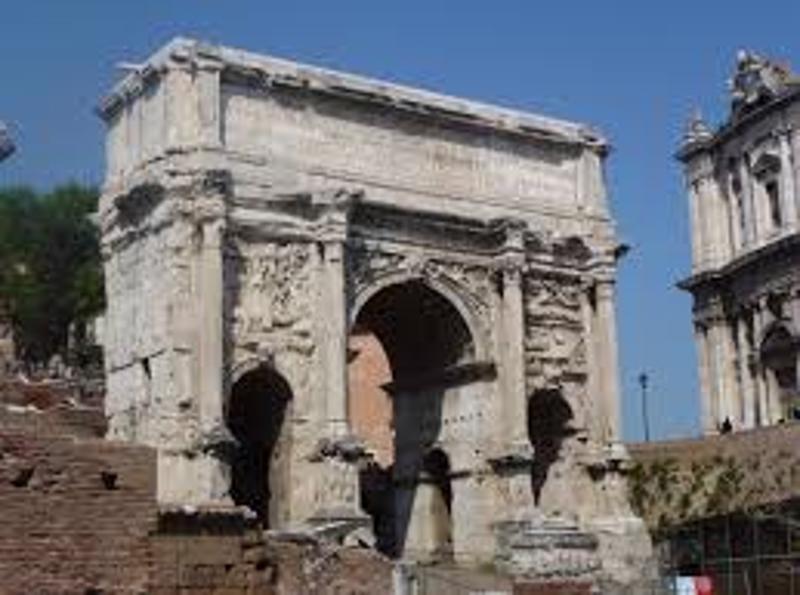Classics 304: Eternal Rome Digital Portfolio
Public artwork was another major part of the everyday life of a Roman. Public artwork was not only used to commemorate or immortalize a person or event but also as a source of entertainment for the people of Rome. After great victories in major battles the Romans would usually immortalize the battle and its commander using the medium of public art. If you walk around rome today you will see many ornate arches and columns with pictures depicted along every side of them. These pictures tell a story of the great triumph that caused the building of these monuments. The people would line up along these monuments and read the stories of the great heroes of their day and tell the stories to their children. This would provide entertainment and legend for generations to come and would become an integral part of the life of a Roman. The Arch of Titus is a good example of this. Although today a lot of the art work is missing from the arch we can see the depictions of Titus sacking ancient Jerusalem and destroying the temple. This would have been the kind of image that sparked the story telling of ancient times.
kashford
22 chapters
16 Apr 2020
Chapter Seven: The Arch of Titus
Roman Forum
Public artwork was another major part of the everyday life of a Roman. Public artwork was not only used to commemorate or immortalize a person or event but also as a source of entertainment for the people of Rome. After great victories in major battles the Romans would usually immortalize the battle and its commander using the medium of public art. If you walk around rome today you will see many ornate arches and columns with pictures depicted along every side of them. These pictures tell a story of the great triumph that caused the building of these monuments. The people would line up along these monuments and read the stories of the great heroes of their day and tell the stories to their children. This would provide entertainment and legend for generations to come and would become an integral part of the life of a Roman. The Arch of Titus is a good example of this. Although today a lot of the art work is missing from the arch we can see the depictions of Titus sacking ancient Jerusalem and destroying the temple. This would have been the kind of image that sparked the story telling of ancient times.

1.
Introduction
2.
Chapter One: The Gemini Statues
3.
Chapter 2: The Largo Argentina
4.
Chapter Three: The Temple of Jupiter
5.
Chapter 4: The Via Sacra
6.
Chapter Five: The Colosseo
7.
Chapter 6: Statue of Augustus
8.
Chapter Seven: The Arch of Titus
9.
Chapter 8: Constantine's Basilica
10.
Chapter Nine: The Tiber River
11.
Chapter 10: The Sarcophagi
12.
Chapter 11: Caesars Forum
13.
Chapter Twelve: St. Peters Basilica
14.
Chapter 13: Roman Sewers
15.
Chapter Fourteen: Egyptian Obelisk
16.
Chapter 15: The Pantheon
17.
Chapter Sixteen: Bernini Bridge
18.
Chapter 17: The Wedding Cake
19.
Chapter Eighteen: The Mussolini Window
20.
Chapter 19: Basilica of Saint Lawrence
21.
Chapter 20: The Piazza del Popolo
22.
Conclusion: The more things change